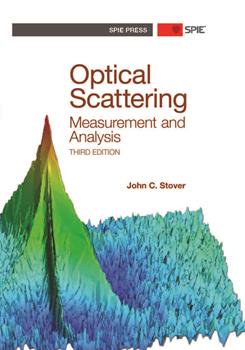|
The first edition of this book concentrated on relating scatter from optically smooth surfaces to the microroughness on those surfaces. After spending six years in the semiconductor industry, Dr. Stover has updated and expanded the third edition. Newly included are scatter models for pits and particles as well as the use of wafer scanners to locate and size isolated surface features. New sections cover the multimillion-dollar wafer scanner business, establishing that microroughness is the noise, not the signal, in these systems. Scatter measurements, now routinely used to determine whether small-surface features are pits or particles and inspiring new technology that provides information on particle material, are also discussed. These new capabilities are now supported by a series of international standards, and a new chapter reviews those documents. New information on scatter from optically rough surfaces has also been added. Once the critical limit is exceeded, scatter cannot be used to determine surface-roughness statistics, but considerable information can still be obtained - especially when measurements are made on mass-produced products. Changes in measurement are covered, and the reader will find examples of scatter measurements made using a camera for a fraction of the cost and in a fraction of the time previously possible. The idea of relating scatter to surface appearance is also discussed, and appearance has its own short chapter. After all, beauty is in the eye of the beholder, and what we see is scattered light. |
-
Journals
- Advanced Photonics
- Advanced Photonics Nexus
- Biophotonics Discovery
- Journal of Applied Remote Sensing
- Journal of Astronomical Telescopes, Instruments, and Systems
- Journal of Biomedical Optics
- Journal of Electronic Imaging
- Journal of Medical Imaging
- Journal of Micro/Nanopatterning, Materials, and Metrology
- Journal of Nanophotonics
- Journal of Optical Microsystems
- Journal of Photonics for Energy
- Neurophotonics
- Optical Engineering
- Photonics Insights
- Ebooks



